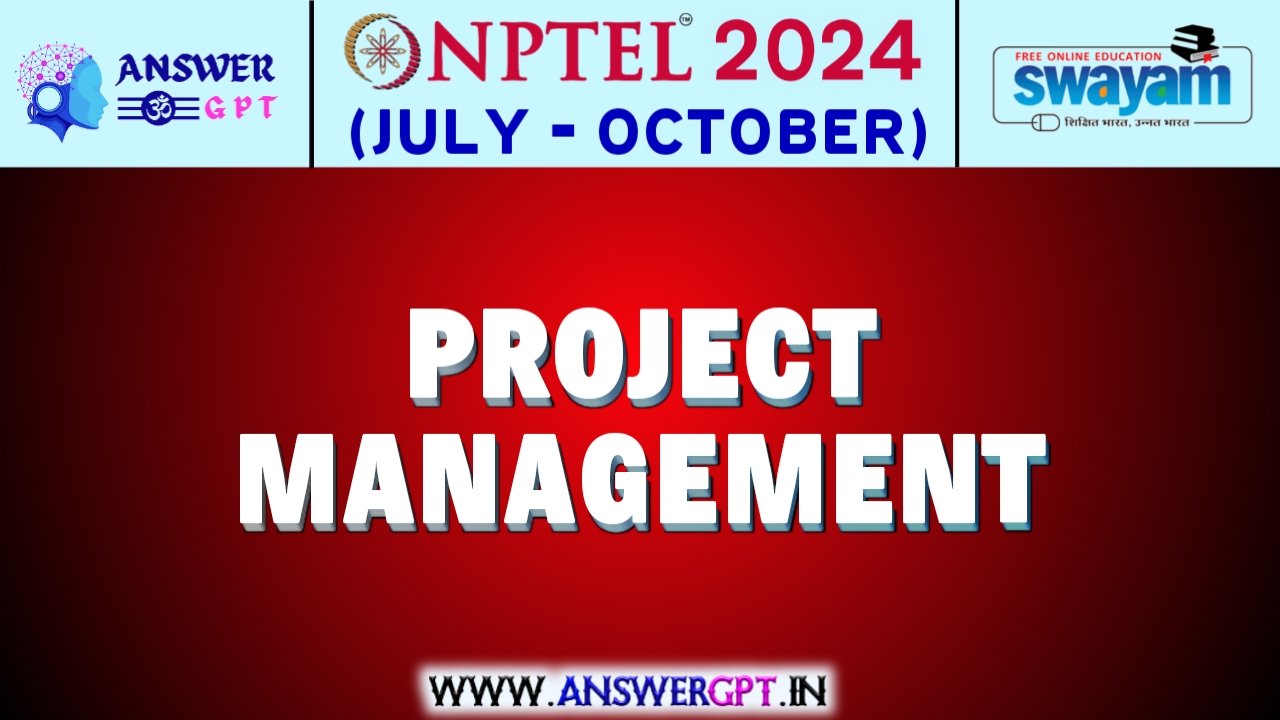Project Management Week 4 NPTEL Assignment Answers 2025
NPTEL Project Management Week 4 Assignment Answers 2024
1. _____________is a critical process that organisations undertake to assess the viability, sustainability, and potential success of a proposed project before committing significant resources.
- A. Project estimation
- B. Project feasibility analysis
- C. Project Monitoring
- D. Launch meeting
Answer: B. Project feasibility analysis
Explanation: Project feasibility analysis evaluates whether a project is realistic and achievable based on factors like technical requirements, cost, and time. It’s done before investing resources to ensure the project has a chance of success.
2. ____________ is a plan for allocating resources. The allocation of resources indicates the degree to which different activities of an organisation are supported fully.
- A. A budget
- B. Direct cost
- C. A management plan
- D. An allocation effort
Answer: A. A budget
Explanation: A budget outlines how an organization’s resources will be distributed to various activities or departments. It reflects the priorities and support levels for each function.
3. The ____________ form of budgeting has the advantage of using individuals closer to the work to provide estimates of resource requirements.
- A. top-down budgeting
- B. work element costing
- C. bottom-up budgeting
- D. iterative budgeting
Answer: C. bottom-up budgeting
Explanation: Bottom-up budgeting involves those directly involved in the tasks to provide cost and resource estimates. This often results in more accurate planning.
4. Which of the following is not a type of quantitative risk analysis?
- A. Failure Mode and Effects Analysis
- B. decision tree analysis
- C. Monte Carlo simulations
- D. expert judgment
Answer: A. Failure Mode and Effects Analysis
Explanation: FMEA is generally a qualitative tool used to identify potential failure modes, their causes, and effects. Quantitative techniques use numerical data to evaluate risks.
5. In risk response planning, where the goal of the project manager is to increase the probability that the opportunity will occur, the project manager must ________
- A. exploit
- B. share
- C. enhance
- D. accept
Answer: C. enhance
Explanation: Enhancing is a risk response strategy aimed at increasing the likelihood of positive risks (opportunities). It involves actions to make the opportunity more likely to occur.
6. A(n) __________ is the conversion of the project work breakdown structure into an operating timetable.
- A. chart
- B. application
- C. crash
- D. schedule
Answer: D. schedule
Explanation: A schedule translates the Work Breakdown Structure (WBS) into a time-based plan, showing when each task or deliverable will be started and completed.
7. The activities that take place at the same time
- A. Sequential activities
- B. Parallel activities
- C. Immediate predecessor
- D. Successor
Answer: B. Parallel activities
Explanation: Parallel activities are those that can be executed simultaneously, reducing the overall project duration when managed correctly.
8. Which type of project has the critical path method (CPM) primarily been used for?
- A. Construction
- B. Manufacturing
- C. Industrial
- D. Research and development
Answer: A. Construction
Explanation: CPM is most widely used in the construction industry, where it’s vital to manage project timelines, resources, and dependencies efficiently.
9. The difference between the late start and early start for an activity is called its _________.
- A. critical path
- B. task
- C. progress
- D. slack
Answer: D. slack
Explanation: Slack (or float) is the amount of time that an activity can be delayed without delaying the project. It’s key in identifying schedule flexibility.
10. Which is the below-mentioned rule? “The earliest start time for an activity is equal to the largest (i.e., latest) of the earliest finish times for all its immediate predecessors.”
- A. Backward pass
- B. Variance
- C. Forward pass
- D. Slack
Answer: C. Forward pass
Explanation: The forward pass technique calculates the earliest start and finish times by moving forward through the project network diagram from start to end.



![[Week 1-8] NPTEL Project Management Assignment Answers 2024](https://answergpt.in/wp-content/uploads/2024/02/NPTEL-Project-Management-Assignment-Answers-2024.jpg)


